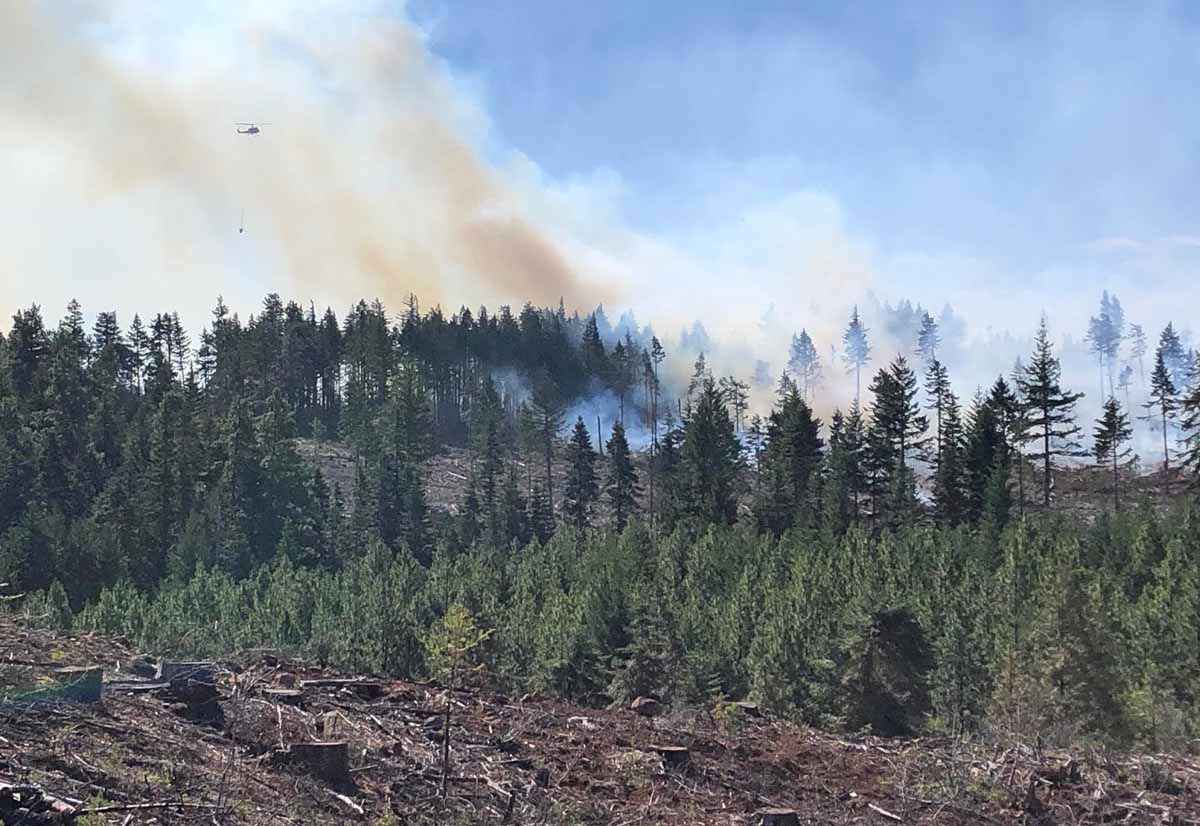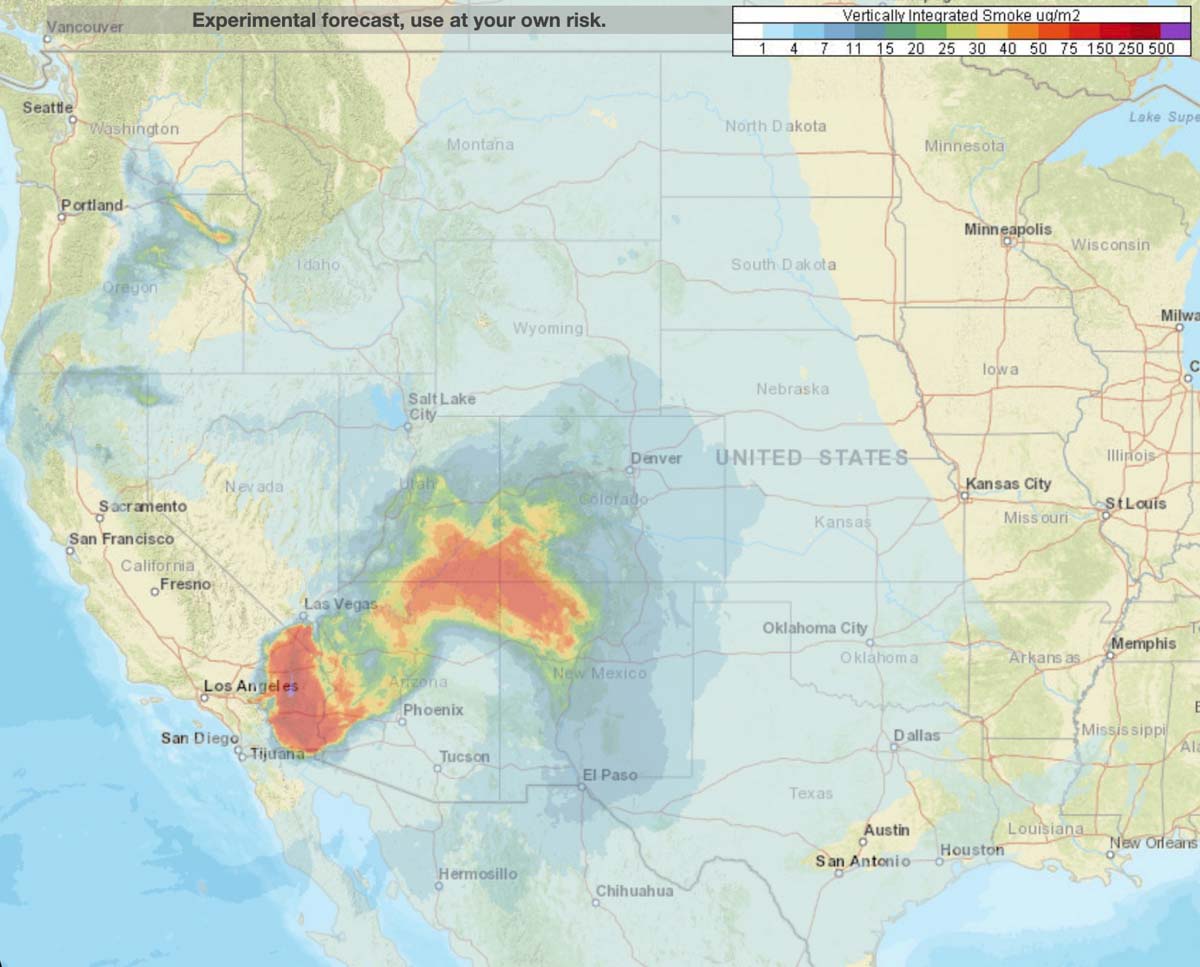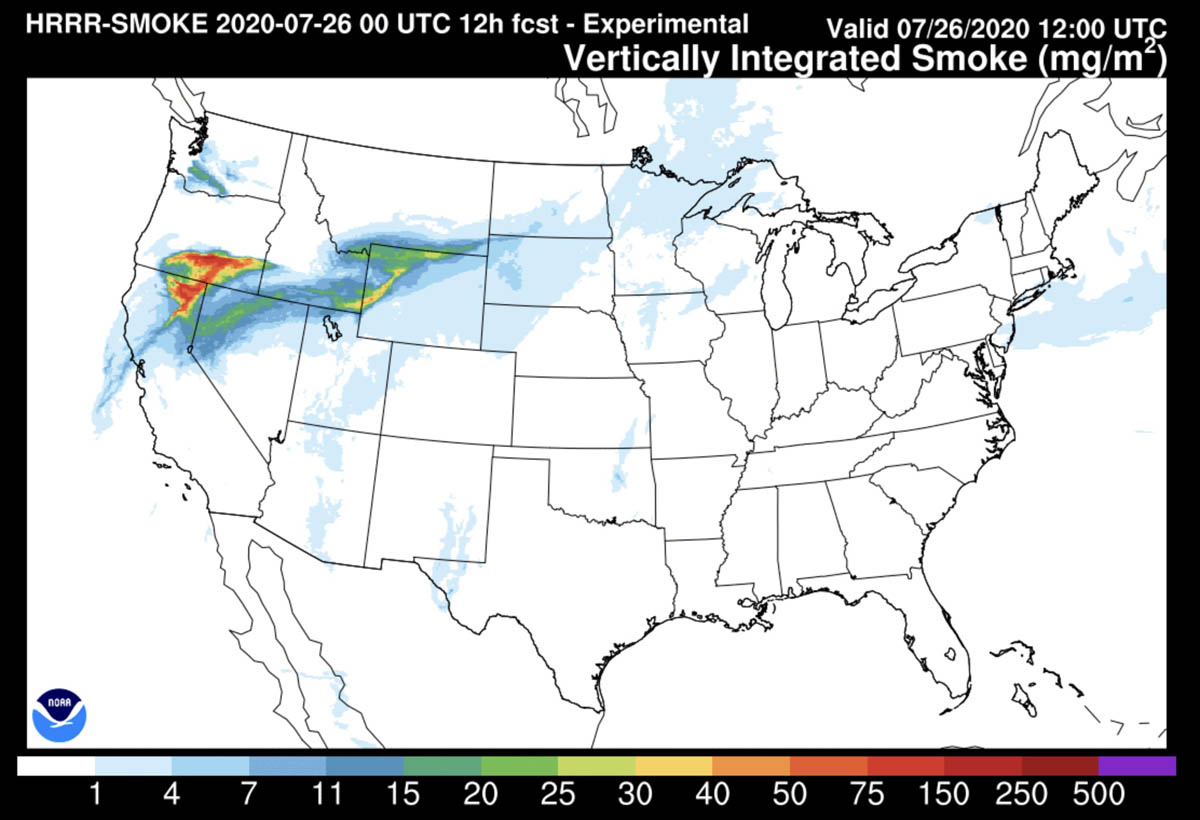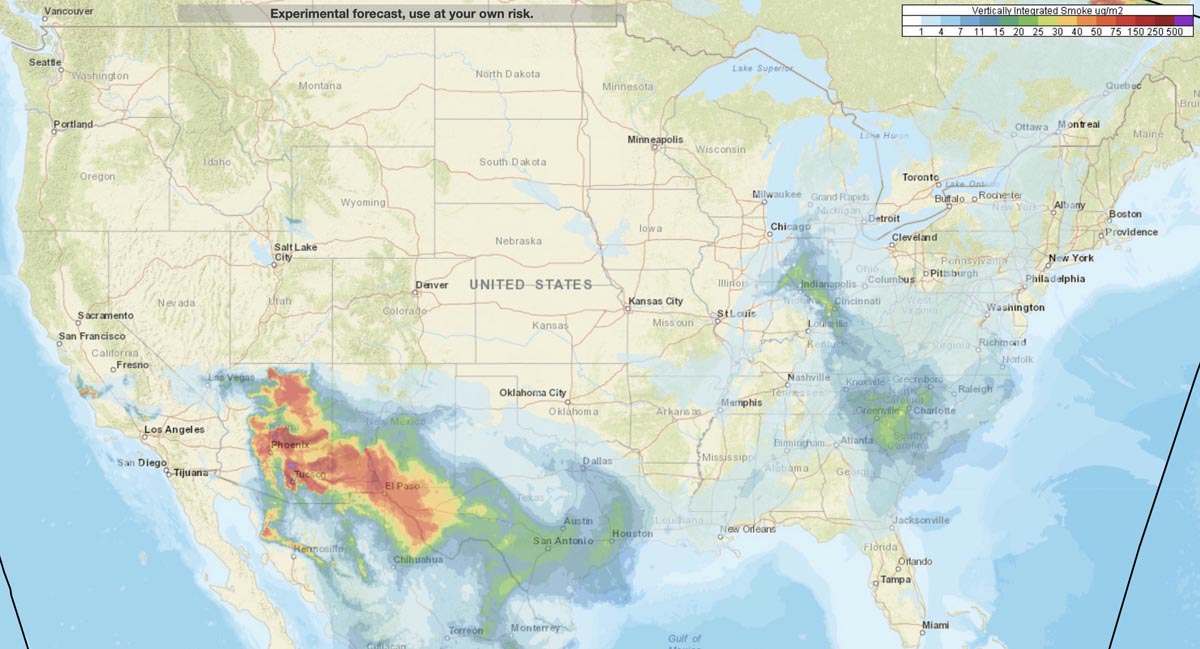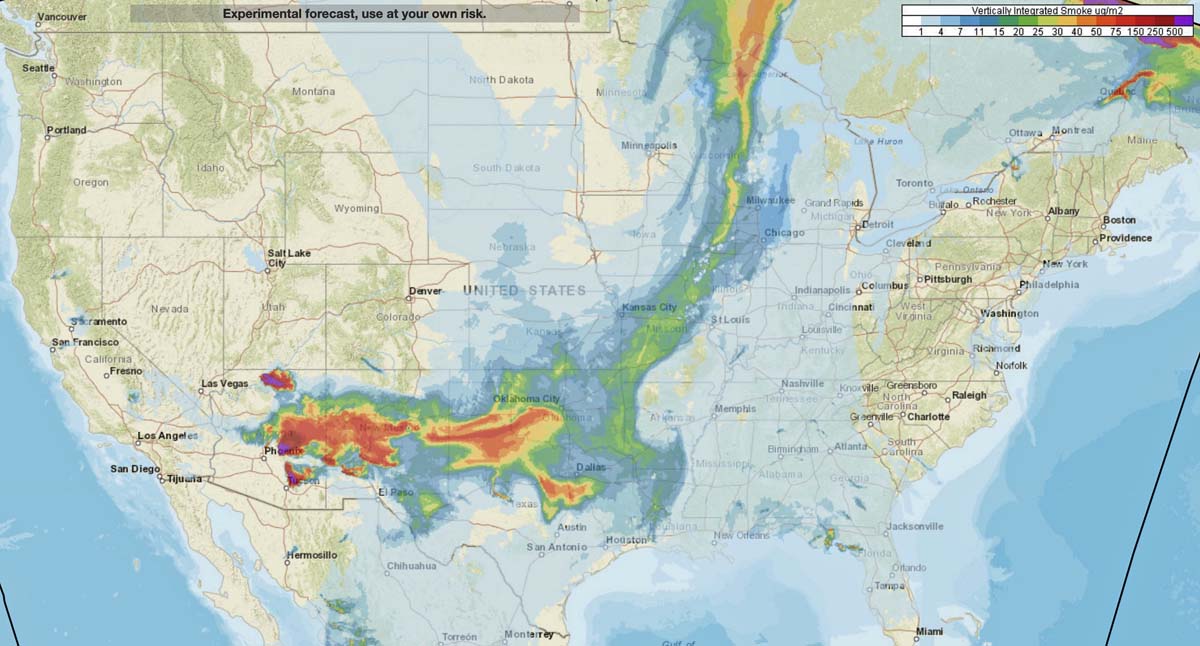August 2, 2020 | 4:38 p.m. PDT
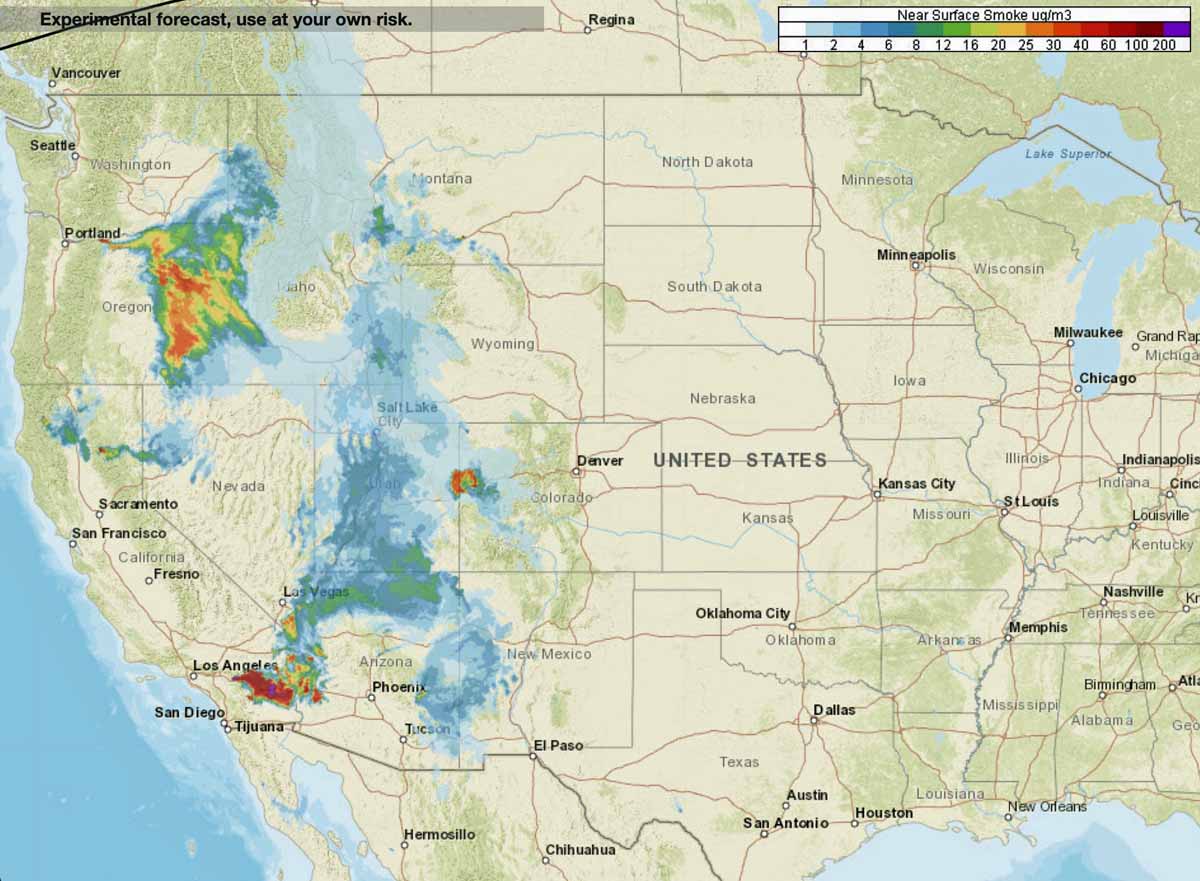
Smoke from southern California’s 20,000-acre Apple Fire is predicted to move north overnight Sunday. Monday morning it is expected to affect areas in areas of Arizona, Nevada, Utah, Wyoming, and Idaho.
The map above created by NOAA is for near-surface smoke which can affect humans more than vertically integrated smoke higher in the atmosphere.
NOAA predicts that a new fire in north-central Oregon, the Fir Mountain Road Fire seven miles south-southeast of Hood River, will produce smoke that will move into eastern Oregon, southeast Washington, and eastern Idaho. The fire started Saturday night, and Sunday morning was estimated at 70 acres. It seems surprising that it could be generating such a large quantity of smoke, however it is burning in slash piles from recent logging, as well as adjacent standing timber.
